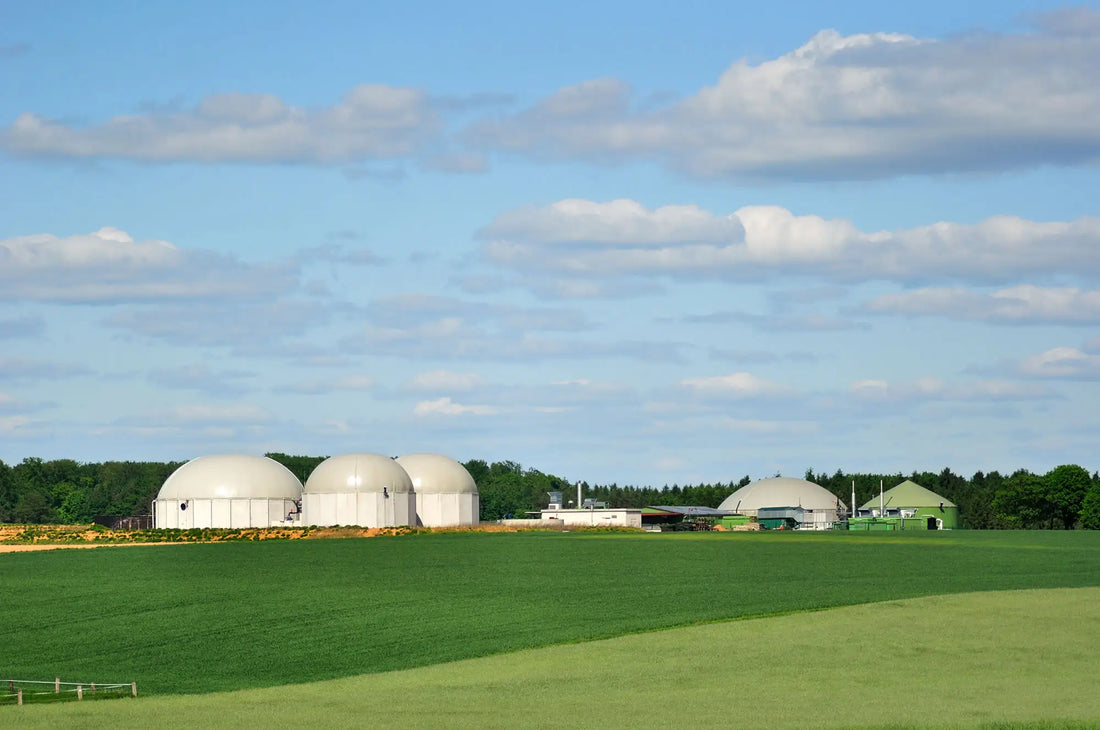Anaerobic digestion (AD) is a powerful, nature-driven process that transforms organic waste into valuable biogas and nutrient-rich digestate. While mechanical design and feedstock preparation are essential, the real engine of anaerobic digestion lies in the biology, specifically, the microbial communities responsible for breaking down complex organics and producing methane.
Biological inoculants are carefully selected microbial formulations designed to boost digestion performance. When used strategically, they can improve stability, reduce lag time, and significantly increase gas yield. In this article, we’ll walk through five key steps to optimize your anaerobic digestion process using biological inoculants, backed by field experience, lab data, and microbial science.
Step 1: Assess Your System’s Biological Performance
Why it matters: Each AD system is unique. Factors like feedstock type, digester design, temperature range (mesophilic vs. thermophilic), pH and loading rate influence microbial dynamics.
What to assess:
- Feedstock Characteristics (Total Solid and Volatile solid)
- Gas production trends (daily volume, methane %, and CH4/ CO₂ ratio)
- Volatile fatty acid (VFA) levels and FOS/TAC ratio
- pH and alkalinity stability
- Hydrogen sulfide (H₂S) and ammonia (NH₃) concentrations
- Retention time and sludge buildup
These indicators help identify process bottlenecks—whether it’s slow hydrolysis, excess acid buildup, or inhibited methane conversion.
Pro Tip: Methane yield fluctuations or persistent odor are often signs of microbial imbalance.
Step 2: Match the Right Inoculant to the Right Stage
Anaerobic digestion occurs in four biological stages:
- Hydrolysis – Breakdown of complex organics
- Acidogenesis – Ferments soluble compounds into VFAs
- Acetogenesis – Converts VFAs into acetate, H₂, and CO₂
- Methanogenesis – Produces methane from acetate and H₂
Each stage relies on different microbial groups. To be effective, inoculants should target the specific stage where performance is lagging.
Examples:
- High lignocellulose or fibrous feedstocks (e.g., manure with straw): Use BGEH, an enzyme-enhanced hydrolysis inoculant
- Low methane + high H₂S output: Use BGEM, a methanogen-rich formulation that boosts methane purity and suppresses H₂S
- General digestion support: Use BGE1 and BGE2, which reinforce microbial activity across hydrolysis, acidogenesis, and acetogenesis
Pro Tip: If your FOS/TAC ratio exceeds 0.4, your system may be overloaded with VFAs. Inoculating with acetogens and methanogens can help restore balance
Step 3: Time Your Inoculation for Maximum Impact
When to Apply Inoculants:
- Startup – Seeding digesters with a strong microbial base shortens lag time and speeds up first gas production.
- System recovery – After pH crash, feedstock shock, or temperature swings, inoculants help reestablish balance quickly.
- Feedstock transitions – Switching to high-fat, high-protein, or more fibrous substrates may require microbial support.
- Seasonal fluctuations – Cold temperatures can reduce microbial activity; inoculants help maintain throughput.
Best Practice: Apply higher doses during the first 1–2 weeks of use, then shift to maintenance dosing.
Pro Tip: Apply inoculants during active mixing to ensure even distribution across the reactor.
Step 4: Monitor Performance & Adjust Doses
Biological systems are dynamic. Once inoculants are in use, monitor key performance indicators (KPIs) regularly:
- Methane concentration (CH₄ %)
- Total biogas yield (Nm³/day)
- H₂S levels (ppm)
- Sludge reduction
- Foam or scum layer changes
If you see improved gas output or reduced foaming, maintain the current dose. If performance plateaus, consider adjusting dosage, especially for high-load or variable feedstocks.
Case Study Example 1: In a 600,000-gallon digester treating swine manure and poultry litter:
- H₂S dropped from 270 ppm to 80 ppm in 30 days
- Methane concentration rose from 50% to 57%
Case Study Example 2: BMP lab testing showed a 26.6% increase in methane yield using a high-dose application of BGE1 + BGEM.
Pro Tip: Review data every 2–4 weeks to refine your dosing strategy.
Step 5: Integrate Inoculants into Your SOPs
For long-term performance, integrate biological dosing into your standard operating procedures (SOPs).
Why:
- Ensures consistency across shifts
- Simplifies onboarding of new feedstocks
- Enables rapid responses to system changes
- Promotes a data-driven culture
What to Document:
- Product names and application schedule
- Target KPIs (e.g., CH₄ > 55%, H₂S < 200 ppm)
- Action plans for process upsets (e.g., foaming, acidification)
Pro Tip: Use a digital logbook or dashboard to track inoculant usage against gas production trends.
Let Biology Drive Your Digester’s Performance
While equipment, controls, and feedstock quality all play key roles in anaerobic digestion, a thriving microbial ecosystem is what truly powers long-term efficiency.
By following these five steps—assessing your baseline, targeting the right microbial stage, timing applications correctly, monitoring outcomes, and embedding inoculants into SOPs—you can:
- Boost methane yield
- Improve system resilience
- Reduce downtime and H₂S production
- Optimize operational ROI
Ready to fine-tune your digester with biology?
Visit www.elibiosciences.com
Contact us: info@elibiosciences.com | 1-800-645-3285

